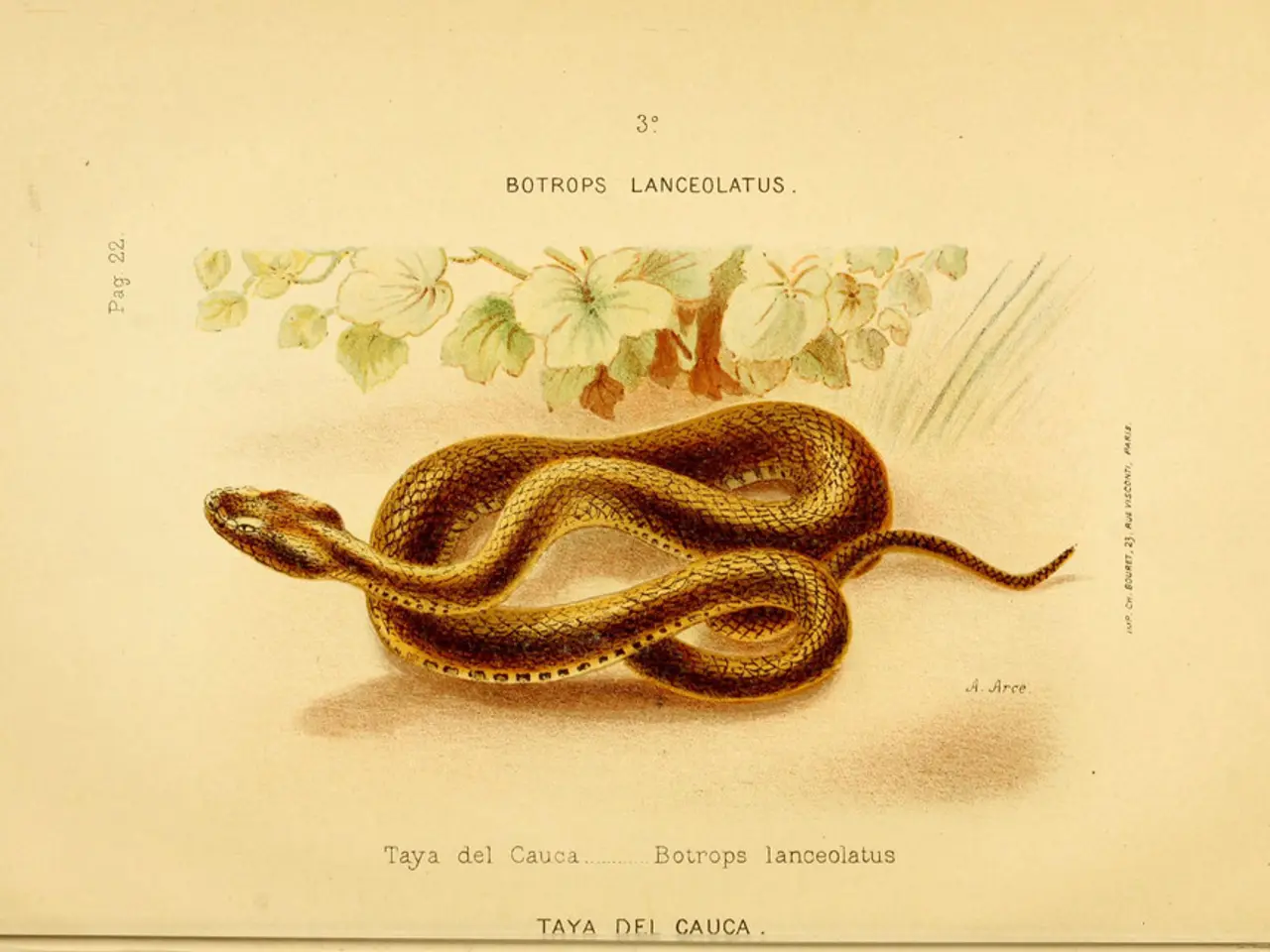Human genetic research points towards a probable cause for the emergence of a modern age of illness in humanity
In a groundbreaking study published in the journal Nature, researchers have mapped over 37,000 years of infectious diseases in humans, providing insights into the emergence and spread of zoonotic diseases throughout history [1]. The study, which involved scientists from British, Danish, Swedish, German, Italian, and Australian universities, suggests that farming and animal domestication played a crucial role in the emergence and spread of these diseases [2].
Associate Professor Martin Sikora of the University of Copenhagen and lead professor Eske Willerslev, from the Universities of Cambridge and Copenhagen, led the research team. They analysed DNA from over 1,300 prehistoric humans dating back as far as 37,000 years ago [3].
The study reveals that as humans started domesticating animals and developing farming communities, they lived in much closer contact with animals. This proximity allowed pathogens that normally infect animals to jump the species barrier and infect humans [1][4]. As a result, the rise of animal husbandry and agriculture opened a new era of infectious diseases, leading to outbreaks of bacterial, viral, and parasitic illnesses that previously were rare or absent in humans [2][3].
Around 5,000 years ago, evidence shows a peak in zoonotic infections, matching the spread of livestock domestication across different regions [1][3]. Large-scale migrations of pastoralist groups, such as from the Pontic Steppe, also helped spread these zoonotic diseases to new human populations, accelerating their distribution [2][3].
Some of the ancient diseases identified include yersiniosis from Yersinia enterocolitica bacteria and bubonic plague caused by Yersinia pestis, with the latter known historically for devastating epidemics [1][3][4]. These zoonotic infections may have had profound impacts, not only causing illness but also contributing to population collapses, migrations, and genetic adaptations in human groups [2][3].
Understanding the past can help prepare for the future, as many emerging infectious diseases are predicted to originate from animals. Sikora stated that the study highlights the importance of monitoring animal populations for signs of disease and developing strategies to mitigate the risk of zoonotic disease transmission [5].
The oldest genetic trace of the bacterium responsible for the plague was discovered in a sample from 5,500 years ago. Traces of leprosy were found from 1,400 years ago, malaria from 4,200 years ago, hepatitis B from 9,800 years ago, and diphtheria from 11,100 years ago [3]. Willerslev mentioned that successful mutations in the past are "likely to reappear", which is important for future vaccine development [6].
The study also suggests testing current vaccines for sufficient coverage or developing new ones due to mutations. Willerslev emphasised the need for continuous monitoring and adaptation in our fight against zoonotic diseases [6].
References:
[1] Science Daily. (2021). Farming and animal domestication spurred infectious diseases in humans, study reveals. [online] Available at: https://www.sciencedaily.com/releases/2021/03/210303122648.htm
[2] The Guardian. (2021). Farming and animal domestication led to rise of infectious diseases, study finds. [online] Available at: https://www.theguardian.com/science/2021/mar/03/farming-and-animal-domestication-led-to-rise-of-infectious-diseases-study-finds
[3] University of Cambridge. (2021). Study reveals 37,000 years of infectious diseases in humans. [online] Available at: https://www.cam.ac.uk/research/news/study-reveals-37000-years-of-infectious-diseases-in-humans
[4] The New York Times. (2021). Farming and Animal Domestication Led to Rise of Infectious Diseases, Study Finds. [online] Available at: https://www.nytimes.com/2021/03/03/science/farming-animal-domestication-infectious-diseases.html
[5] Science Alert. (2021). Farming and animal domestication led to the rise of infectious diseases in humans, study reveals. [online] Available at: https://www.sciencealert.com/farming-and-animal-domestication-led-to-the-rise-of-infectious-diseases-in-humans-study-reveals
[6] The Conversation. (2021). Farming and animal domestication led to the rise of infectious diseases in humans, study reveals. [online] Available at: https://theconversation.com/farming-and-animal-domestication-led-to-the-rise-of-infectious-diseases-in-humans-study-reveals-157889
Science findings reveal that the onset of animal husbandry and agriculture facilitated the emergence and spread of various infectious diseases, such as yersiniosis and bubonic plague, among human populations. Ongoing monitoring and development of strategies to mitigate zoonotic disease transmission are crucial for future health and wellness, as many emerging diseases are predicted to originate from animals. Medical-conditions like leprosy, malaria, hepatitis B, and diphtheria were traced back to thousands of years, suggesting that successful mutations in the past are likely to reappear, with potential implications for vaccine development.




